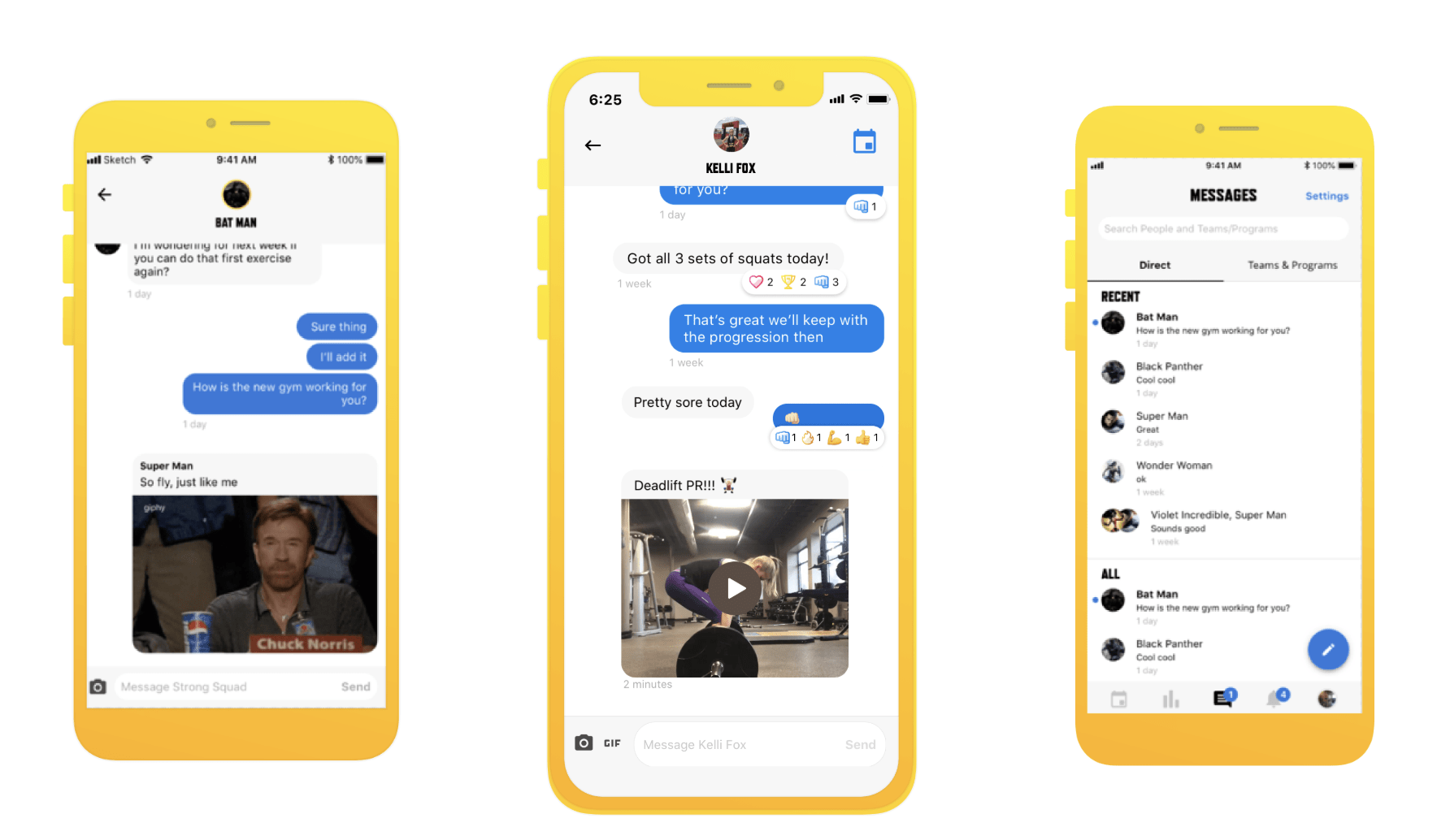How to Jump Higher, Further, and Faster
Strength & ConditioningWhether you are a professional athlete or just looking to improve your training, being able to jump higher and further can give you an advantage.
In this article, Tim provides you with the best blueprint to jump higher, further, and faster. This is the best plan for anyone looking to improve their jump height.
Tim DiFrancesco
Doctor Tim DiFrancesco is the President & Founder of TD Athletes Edge. In December of 2011, he was named the Head Strength & Conditioning Coach of the Los Angeles Lakers in the NBA. While traveling with the Lakers for over 6 seasons from 2011-2017, Tim built TD Athletes Edge. TD Athletes Edge is nationally renowned for its evidence-based and scientific approach to training, nutrition, and recovery for athletes and fitness enthusiasts. Follow Dr. DiFrancesco on Instagram at @tdathletesedge
Find Coach DiFrancesco’s training in TrainHeroic’s Marketplace here.
// Exercises to Jump Higher and leap further
We just witnessed one of the most competitive NBA dunk contests in history.
There’s something about a guy defying gravity in a way most of our mere mortals could never dream of that continues to captivate the imagination – even when the final result is dubious (what does Aaron Gordon have to do to win, leap over the Empire State Building?).
It’s not just vertical leaps like those pulled off by pro basketball’s high flyers that create iconic images – think of Bob Beamon soaring to win long jump gold in Mexico City in 1968, Simone Biles somersaulting her way to the top of the podium in the Rio de Janeiro Olympics, or Kansas City Chiefs running back Priest Holmes vaulting over onrushing linemen to score yet another acrobatic touchdown in his historic 2003 NFL season.
And it’s not just basketball, track and field, gymnastics, and football that require athletes to generate force, apply it to the ground, and get to where they need to be quickly and powerfully.
Rugby, baseball, softball…the list goes on and on. I’ve been blessed to work with some of the greatest leapers in the NBA, from Kobe Bryant (rest in peace, brother) to Dwight Howard to Shaquille O’Neal, and since founding TD Athletes Edge, I’ve trained individuals and teams in just about every sport.
These experiences have demonstrated time and time again that being able to explode off the court, track, pitch, or field gives an athlete a distinct competitive advantage.
While there is no one magic exercise (no matter what Instagram might try to tell you), this article will hopefully provide you with a blueprint to jump higher, further, and faster.
Now, it’s time for takeoff.
Lift and Leap Jump Training

There are many methodologies that can potentially increase your leaping ability, but for the sake of simplicity and keeping this article below textbook length, let’s stick to one that’s tried and true: combining a compound lift with a plyometric exercise.
Depending on your goals, you could either perform the weight-bearing exercise first and then the explosive one, or vice versa.
Due to the need to create peak speed and power during the plyometric portion of the workout, I recommend sticking to two or maximum three sessions of this kind per week.
Any more and you’ll be increasing your risk of injury and overloading your central nervous system, not to mention mitigating gains.
Here’s an example of how you could break up a typical training week.
While there are other variations, I like to focus my athletes in one plane of motion per session, so you’ll see that day one is vertical, day two lateral, and day three horizontal.
I also suggest mixing things up between two and one-legged jumps and landings, as just about every sport requires you to explode off one leg at some point.
If we’re talking about peak force development, you’d probably want both feet to be evenly placed and spaced and to rise off the floor from a two-footed takeoff.
But in the heat of competition, nothing is perfect and launching off one leg is frequently required, whether you’re jumping, changing direction, cutting, etc.
So train as you intend to compete by mixing things up.
Other variables that you can tweak include what you’re going for in each set of jumps, bounds, or hops.
So sometimes you might target a single maximal effort, as would be required at the NFL or NBA Combine (or, going back to Aaron Gordon, when clearing the 7-foot-5 Tacko Fall in a dunk contest!).
On other occasions, prioritize less time on the floor (quicker reaction), repeat jumping to a certain standard, and vary whether you try for length or height on each rep.
From a safety standpoint, I also suggest stepping down from box jumps and step-ups, as we’re seeing an increasing number of injuries when people are jumping both up and down to get as many reps as possible in a certain timeframe.
And per the work of the great Charlie Francis, when you feel the quality, speed, or power of your jumping start to drop, your session is over for the day. As kettlebell pioneer Pavel Tsatsouline says, “Fatigue is rarely a good teacher.”
So keep the rep range lower than you might think, focusing on high quality and efficiency in every single jump.
If you’re doing the lifting before the leaping, don’t do so many squats, swings, or whatever exercise you’re performing that it compromises the power or speed of your jumps (should this happen even with less reps, then switch things up and do your jumping first).
Follow This Training Plan to Improve Your Jump Height
Monday: Vertical Jumping
Lift: Kettlebell or goblet squats, or barbell front squats, immediately followed by a set of:
Leap: Squat jumps
Wednesday: Lateral Jumping
Lift: Single-leg lateral lunges with a weight plate or dumbbells, immediately followed by a set of:
Leap: Side-to-side bounds
Friday: Horizontal Jumping
Lift: Kettlebell swings, immediately followed by a set of:
Leap: Broad jumps
What about the other days of the Week?
That’s simple.
Either practice/play your sport or focus on mobility, stability, and core work that will enable and support the high intensity movement you’re asking of your body on the three (or, again, if that feels like too much, two) jumping days. Remember that training stimulus alone doesn’t determine adaptation – you also need to build in sufficient recovery.
Please note that the plan above is but one of almost infinite variations.
Just because a certain exercise works for someone else, doesn’t mean it will be effective for you.
Injury history, the way your muscles activate or don’t, and your stability and/or mobility limitations might mean you need to substitute one of the movements above for a similar one (e.g. you do back squats instead of front or goblet squats).
Keep tweaking the knobs and levers, see what works for you, and, when possible, enlist the guidance of an experienced coach to help you take flight explosively while training responsibly and recovering fully.
Further Reading
Next step: take your landings seriously! Check out this article by our friends over at BarBend once your jump skills are progressing.
I Know You Can Jump, But Can You Land?
Programs By TD Athletes Edge
Even when you can’t get to the gym, that doesn’t mean the gym can’t come to you! TD Athletes Edge brings you the following at-home bodyweight training guide to continue working towards your individual health and wellness goals from the comfort of your own home.
TAKE YOUR TRAINING
TO THE NEXT LEVEL
The TrainHeroic Marketplace
TrainHeroic brings online training and strength programs to life with an unmatched imersive training experience delivered directly to your phone. Browse our Marketplace for thousands of programs or take your training up a notch by joining an online community with fresh programming and coaching by some of the biggest names in the strength game starting at $15 / month.

READY TO TRY TRAINHEROIC?
Our powerful platform connects coaches and athletes from across the world. Whether you are a coach or trainer looking to provide a better experience for your clients, or you’re an athlete looking for expert programming, click below to get started.
Want more training content?
More coaches and athletes than ever are reading the TrainHeroic blog, and it’s our mission to support them with the best training & coaching content. If you found this article useful, please take a moment to share it on social media, engage with the author, and link to this article on your own blog or any forums you post on.
Be Your Best,
TrainHeroic Content Team
HEROIC SOCIAL
HEROIC SOCIAL
TRAINING LAB
Access the latest articles, reviews, and case studies from the top strength and conditioning minds in the TH Training Lab


